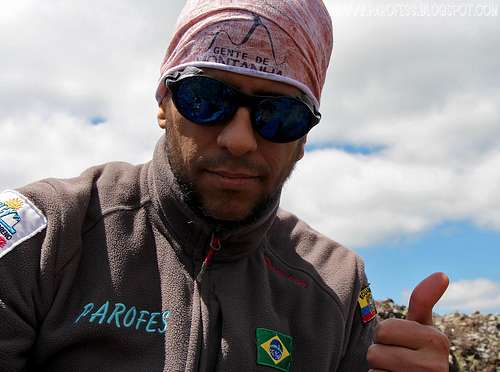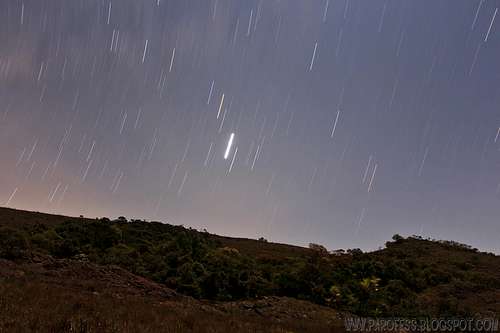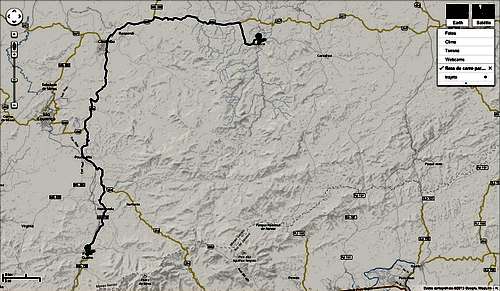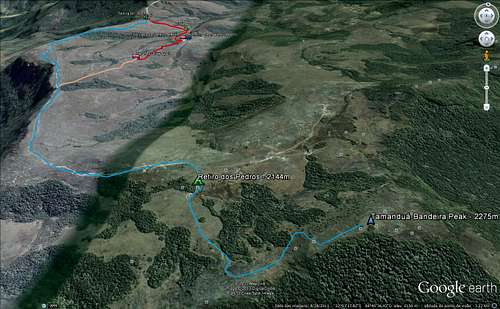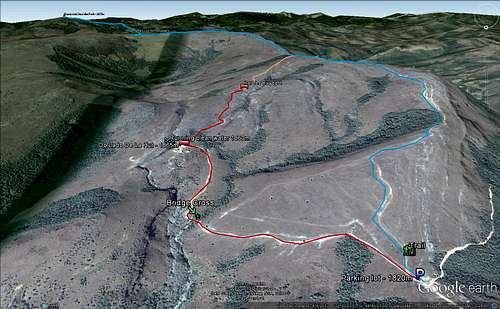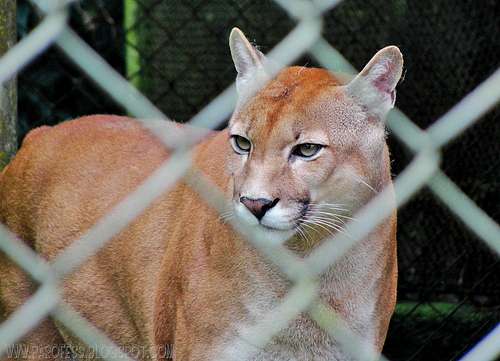|
|
Mountain/Rock |
|---|---|
|
|
22.05892°S / 44.67254°W |
|
|
Aiuruoca |
|
|
Hiking, Mountaineering, Scrambling |
|
|
Fall, Winter |
|
|
7464 ft / 2275 m |
|
|
Overview
Tamanduá Bandeira Hill, or Bandeira Peak, or Gamarra Peak (less known name for it), is the highest and less visited point of Serra do Papagaio, a section of the great Mantiqueira Serra, THE Serra which contains most of the highest peaks of Brazil. The star of this short but gorgeous section of Mantiqueira is Papagaio Peak, which attracts all the attention to itself due to it’s beauty, it’s great vertical wall of 450m with some hard routes, and easy access to anyone who wants to pay expensive transport to locals who provide the service. Very popular hike in the Serra.Tamanduá-Bandeira Hill or Peak is 2.275 meters high, (7,464 feet), and offers a breathtaking view to several of these high brazilian peaks, all of them higher than 2.400m of altitude.
Never got to find the reason for it's name and even for it's second name: First name: Tamanduá Bandeira (animal: Myrmecopha gatridactyla), maybe some of them can be seen over the mountain and it's flanks, really don't know. Talked to some locals but no reason was given to me. The second name: Pico do Gamarra: Another mistery, several locals not even know about this other nomination for the highest summit of this reagion and a 50kms terrain domination. The most probable reason is for the number of animals like this been seen on the mountain since the Tamanduá-Bandeira can be found in almost all Brazil land except Rio Grande o Sul state and Espirito Santo state.
From it’s top, it’s possible to see all the traverse route which begins on Papagaio Peak on the extreme east of the Serra, and crosses (over the main ridge from peak to peak) around five kms, and in total something around 15kms of a light but scenic traverse with several water founts, creeks to cross, amazing wildlife observation, and a clear sky if done in winter time of course. The peaks of this traverse are Papagaio Peak (2.105m/6,906ft) and Tamanduá Bandeira Peak (2.275m/ 7,464ft), each in it’s extreme point of the traverse. East and west.
While hiking absolutely alone in the Serra between October 11th and October 12th of 2013, I could observe a great deal of wildlife which cannot be seen in several other points along Mantiqueira, with a lot more people, a fact that scares away wildlife for sure: I saw eagles, several of them, at least 8 individuals, Urubú de cabeça preta (Coragyps atratus), Urubú Rei (Sarcoramphus papa), Araçari Banana (Pteroglossus bailloni), several spiders of several sizes and species, and a very curious Jacarambeva (Conepatus semistriatus) came to smell my sleeping bag at 9:00pm while I was inside it holding my remote control doing a night long exposure shot! Hehehe…by far the funniest close encounter I have ever had with wildlife.
Besides these, one can observe also the feared Onça Pintada (Panthera onca), Onça Parda aka as Suçuarana (Puma Concolor), LoboGuará (Chrysocyon brachyurus), Jaguatirica (Leopardus pardalis). But, of course, due to its nocturnal activities and necessity to avoid contact with humans, these are rarely spotted over the Serra. Sometimes reports of attack with human fatalities are reported all over the news, always by the Onça, a great cat that has been neglected by humans losing its territory to farmers more and more each year.
Getting There
To get to Aiuruoca is a tricky business just like its neighbor cities Alagoa and Baependi. Best is by bus from Rio de Janeiro or São Paulo. The small map shows the way from Passa Quatro county, one of the bigger cities in the area.From São Paulo, bus towards Caxambú county (Tietê bus terminal – price is R$ 54,55 – around US$ 23.00 – it takes 6h30min).
That can be with viação Cometa (http://www.viacaocometa.com.br/pt/). From there get a second bus to Aiuruoca (same bus terminal – R$ 13,55 around US$ 5.5 – it takes one hour more), or a taxi ride since there’s just one bus leaving the city per day (that would be pretty expensive, around R$ 80,00). Phone: 55 + 11 + 4004-9600.
From Rio de Janeiro get a bus to Caxambu the same way (Novo Rio bus terminal – price is R$ 53,47 – around US$ 22.00 – it takes 5h30min). From there get a second bus to Aiuruoca (same bus terminal – R$13,55 around US$ 5.5 – it takes one hour more), or a taxi ride since there’s just one bus leaving the city per day (that would be pretty expensive, around R$ 80,00).
That can be with Viação Cidade do Aço (http://www.cidadedoaco.com.br/pt/). Phone: 55 + 21 + 2136-4750.
Route
Red Tape
As said above, be very careful with wildlife in here, protect yourself, DON’T MAKE FIRE to drive away the animals, don’t leave food leftovers inside the tent, close a double bag with it and leave outside the tent, at least 30 feet away, and take it with you next morning. Most likely no wildlife will approach, but if this happens, you’ll be safe. To drive wild animals away some noise will do just fine.
There’s quite a few reports of the feared Onça Pintada (Panthera onca) attacks, the last one a couple years ago, it killed ayoung girl outside the city by the road, and police found only the girl’s head, sad story. Be careful also with the Suçuarana, this animal will probably run away from you, but if it’s a female and a recent mother, that could be a problem. The photo was taken in the São Paulo Zoo, gorgeous cat indeed. Also, be alert for poisonous snakes and bugs.
To pass time, work on long exposure shots! This section of Mantiqueira is good for it, lots of stars
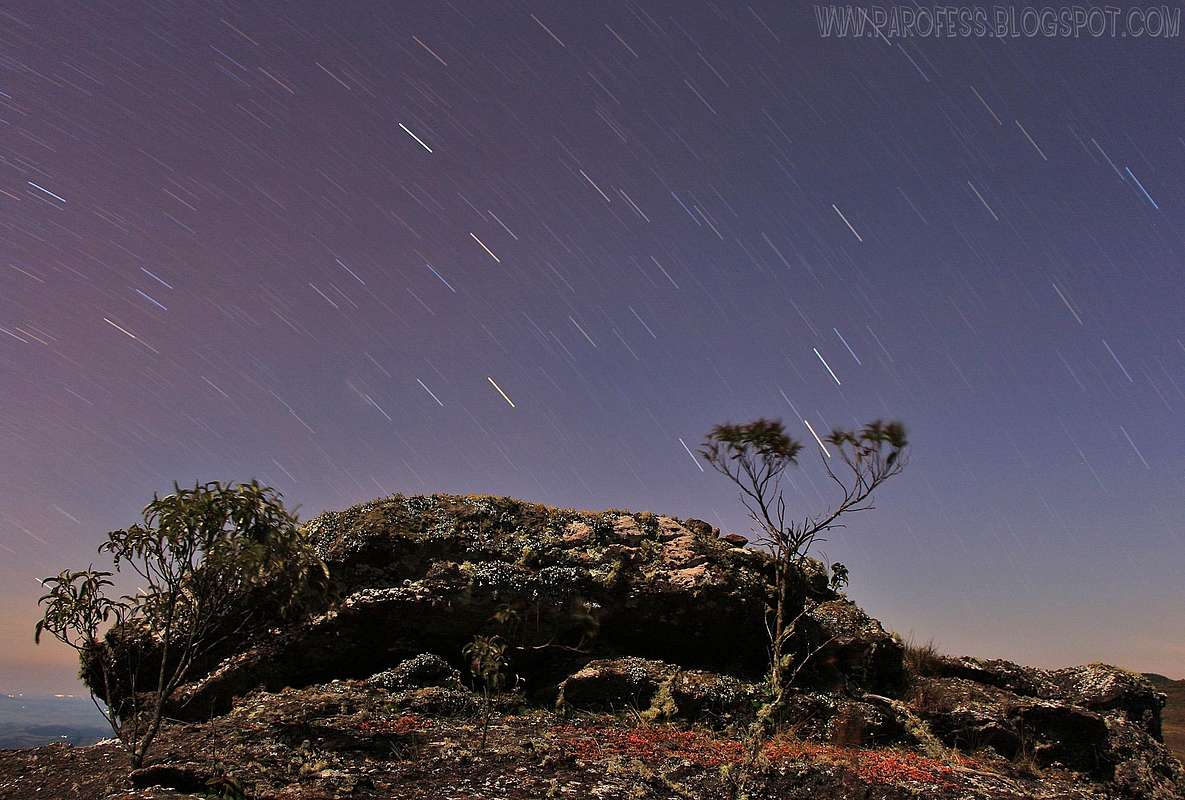

Weather Forecast

Legal Issues
To hike/ climb is a dangerous activity and requires proper equipment and clothing, the owner of this page cannot be blamed by injuries caused to anyone who read this page for its info about the mountain, and eventually got hurt by doing so with reckless behaviour or bad weather conditions.
Paulo Roberto Felipe Schmidt – AKA: PAROFES
External Links
My youtube channel: www.youtube.com/parofes - Now with 270+ videos online!The biggest brazilian website about climbing and mountaineering, for which I'm a columnist:


